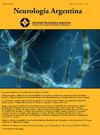经鼻内地西泮:癫痫患者立即紧急治疗的新战略
Q4 Medicine
引用次数: 0
摘要
与抵抗性癫痫相关的挑战之一是出现丛集性癫痫发作的风险。由于这些事件大多发生在医院之外,因此需要非静脉注射治疗,这种治疗可以在家中、学校或由急诊服务的医务人员或辅助医务人员轻松实施。因此,必须有非侵入性、快速和安全给药的替代方案,可由患者自己或其护理人员在任何环境中进行,并促进药物的快速吸收。在这种替代方案中,鼻内途径成为医疗紧急情况下快速给药的理想选择,包括分组或长期危机。目的:本综述的目的是描述鼻的解剖学和生理学,了解为什么它是一个理想的给药途径,回顾药物必须使用的特点,最后分析使用鼻内安定的安全性和有效性数据。结论鼻用地西泮具有给药方便、吸收性好、患者间差异小、社会接受度好等优点,可作为组性或长时间癫痫发作的即时抢救治疗方法;因此,它是院外使用的一种合适而有效的替代方法。本文章由计算机程序翻译,如有差异,请以英文原文为准。
Diazepam intranasal: una nueva estrategia para el tratamiento inmediato en la emergencia en pacientes con epilepsia
Introduction
Among the challenges associated with resistant epilepsy is the risk of presenting cluster seizures. Since most of these episodes occur outside the hospital setting, non-intravenous therapies are required that can be easily administered at home, in schools, or by medical or paramedical personnel in emergency services.
For this reason, it is essential to have alternatives that allow non-invasive, rapid and safe administration, which can be carried out by the patient themselves or their caregiver in any environment, and which facilitate rapid absorption of the drug. Within this alternative, the intranasal route emerges as an ideal option for the rapid administration of medications in medical emergencies, including grouped or prolonged crises.
Objective
The objective of this review is to describe the anatomy and physiology of the nose to understand why it is an ideal route for the administration of rescue medications, review the characteristics that a drug must have to be used by this route, and finally analyze data on safety and efficacy of the use of intranasal diazepam.
Conclusion
Intranasal diazepam has proven to be effective as an immediate rescue treatment for grouped or prolonged seizures, due to its easy administration, good absorption, low variability between patients and good social acceptance; Therefore, it is an appropriate and effective alternative for out-of-hospital use.
求助全文
通过发布文献求助,成功后即可免费获取论文全文。
去求助
来源期刊

Neurologia Argentina
Medicine-Neurology (clinical)
CiteScore
0.50
自引率
0.00%
发文量
34
期刊介绍:
Neurología Argentina es la publicación oficial de la Sociedad Neurológica Argentina. Todos los artículos, publicados en español, son sometidos a un proceso de revisión sobre ciego por pares con la finalidad de ofrecer información original, relevante y de alta calidad que abarca todos los aspectos de la Neurología y la Neurociencia.
 求助内容:
求助内容: 应助结果提醒方式:
应助结果提醒方式:


